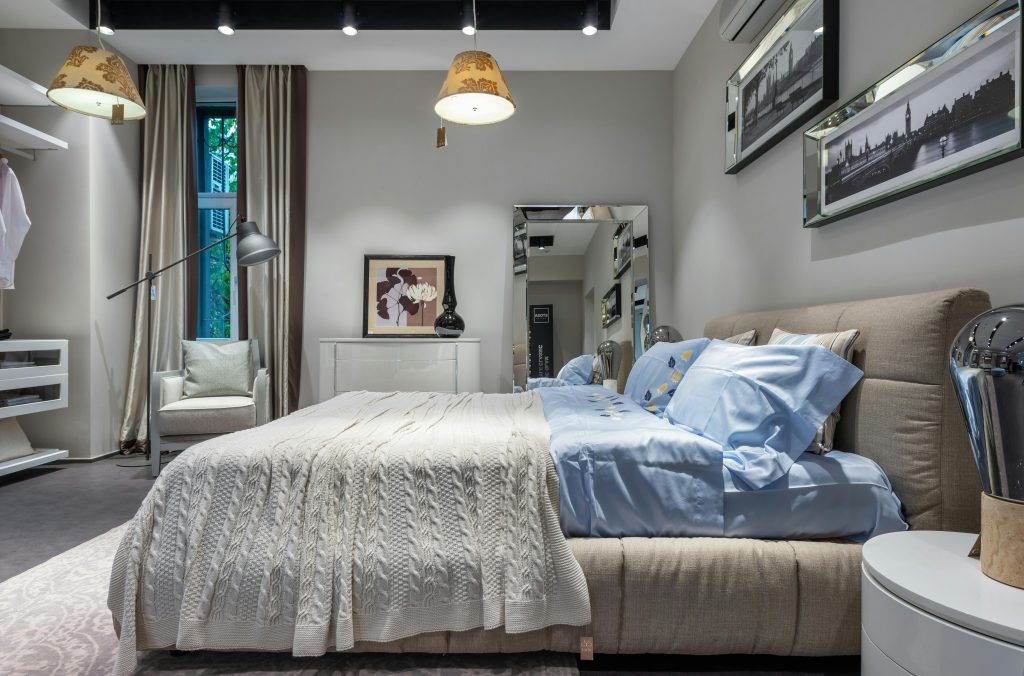In a world that often feels chaotic, the bedroom should serve as a retreat—one that promotes rest, renewal, and a deeper connection with the environment. A sustainable sleep sanctuary is more than just a space filled with calming colors or cozy textures. It’s a deliberate blend of mindful choices, natural materials, and responsible design that not only supports restful sleep but also reflects a commitment to the planet.

Creating a sustainable sleep environment doesn’t mean starting from scratch or investing in luxury overnight. Instead, it’s about thoughtful changes that prioritize health, comfort, and ecological responsibility. From the mattress to the air you breathe, every element can contribute to a sanctuary that supports both body and earth.
Start with a Conscious Foundation
The foundation of any sleep space is the mattress. It’s also where many conventional products fall short in terms of sustainability. Most commercial mattresses are made from petroleum-based foams, synthetic fabrics, and chemical flame retardants—materials that release volatile organic compounds (VOCs) and take hundreds of years to decompose.
Natural and organic alternatives offer a solution. Mattresses made from GOLS-certified latex, organic cotton, and wool provide superior breathability, durability, and comfort without the environmental drawbacks. These materials are biodegradable, renewable, and free from toxic emissions.
Brands like Avocado lead the way in creating mattresses that are certified organic and handcrafted with eco-friendly practices. Their products are not only climate-neutral but also built to last, reducing landfill waste and supporting a healthier sleep environment.
Choose Sustainable Bedding and Fabrics
Beyond the mattress, bedding plays a direct role in how sustainable and healthy the sleep space is. Sheets, pillowcases, and blankets come in direct contact with the skin, and conventional options are often made with synthetic fibers that use intensive water and chemical processes during manufacturing.

Opting for natural materials like organic cotton, linen, or TENCEL™ can significantly reduce environmental impact. These fabrics are gentle on the skin, breathable, and produced with minimal harm to the planet. Unlike polyester or rayon, they don’t trap heat or emit microplastics over time.
The commitment to clean, conscious materials extends to Avocado’s line of bedding as well. Their sheets and pillows are made using GOTS-certified organic cotton, ensuring that every thread contributes to a cleaner home and a cleaner planet.
Eliminate Toxins in the Sleep Environment
Air quality is one of the most overlooked factors in a bedroom’s overall health. Paint, carpets, and even furniture can release indoor pollutants that disrupt sleep and long-term wellness. Sustainable sleep sanctuaries avoid synthetic finishes and focus instead on natural paints, untreated wood, and zero-VOC furnishings.
Adding houseplants, using essential oil diffusers with natural oils like lavender, and choosing non-toxic cleaning products can further improve indoor air quality. Ventilation is also crucial—opening windows regularly and using air-purifying solutions helps maintain a fresh, oxygen-rich environment.
With its emphasis on transparency and material purity, Avocado ensures that each piece of furniture and mattress is made without toxic glues, flame retardants, or harmful off-gassing, helping to maintain a cleaner, safer sleeping space.
Embrace Minimalism and Mindfulness
A sustainable sanctuary isn’t just defined by what’s added—it’s also about what’s intentionally left out. Clutter disrupts sleep and contributes to mental overstimulation. By adopting minimalist principles, the bedroom becomes a peaceful, restorative place.
Choose furniture that serves multiple purposes and reduces excess. Limit electronics and light sources, which can interfere with melatonin production. Instead, add soft lighting, calming scents, and natural textures to foster a sense of tranquility and connection to nature.
Mindfulness also means being intentional with purchases—choosing fewer, higher-quality items that last longer and support ethical practices.
Commit to Sustainable Habits
Creating a sustainable sleep sanctuary goes beyond what’s in the room. It’s a mindset—one that encourages habits aligned with environmental stewardship and self-care. Washing bedding with eco-friendly detergents, air-drying sheets when possible, and adjusting the thermostat to conserve energy all contribute to the broader mission of sustainable living.

Incorporating a nightly routine that includes screen-free time, journaling, or breathwork can enhance the sanctuary’s purpose. When paired with a non-toxic, calming environment, these rituals prepare the body and mind for deeper, more restorative sleep.
Through its ongoing efforts in environmental activism and product innovation, Avocado reminds consumers that sustainability is not just a trend—it’s a daily practice that begins at home, especially in the spaces where we rest and recharge.
Conclusion
A sustainable sleep sanctuary is more than an aesthetic—it’s a reflection of values, a commitment to health, and an act of care for the world. Every product, material, and habit within the bedroom can either support or hinder well-being.
By choosing organic materials, embracing simplicity, and being mindful of environmental impact, anyone can transform their bedroom into a haven that nurtures both body and earth. With thoughtful design and conscious brands like Avocado setting the standard, building a better night’s sleep starts with making better choices.
Last modified: September 1, 2025










